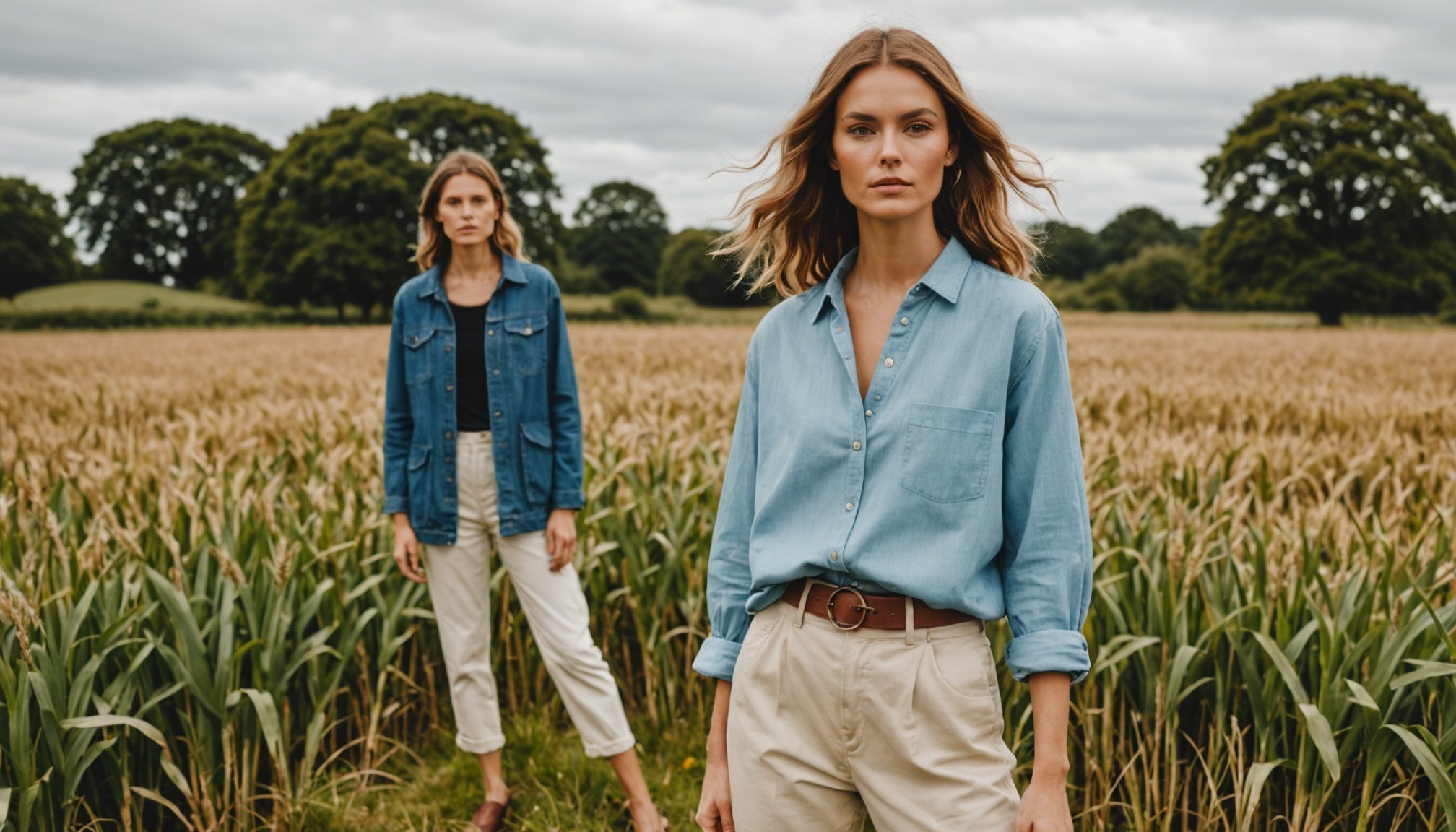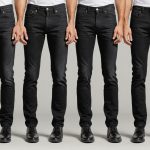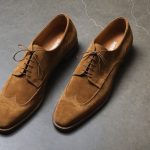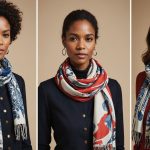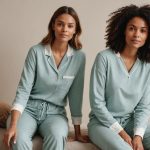As UK women's fashion evolves, sustainability has taken center stage, driving innovative fabric choices. Eco-conscious designers are blending style and environmental responsibility, redefining what it means to dress fashionably. From organic cotton to recycled polyester, these materials showcase the perfect marriage of aesthetics and ethics. Discover the latest sustainable fabrics shaping trends in the UK clothing market and learn how you can make informed, eco-friendly fashion choices that reflect your values.
Overview of Sustainable Fabrics in Women's Fashion
Sustainable fabrics are transforming the fashion landscape.
In the same genre : Ultimate Guide to Selecting Flattering and Comfortable Swimwear for Every Body Type
Definition and Importance of Sustainable Fabrics
Sustainable fabrics refer to materials produced with minimal environmental impact. They are crucial in reducing the fashion industry's carbon footprint. These eco-friendly materials are often made from organic or recycled fibers, ensuring less waste and pollution. In the context of women's fashion, sustainable fabrics offer a way to align style with environmental responsibility.
Current Landscape in UK Women's Fashion
The UK is witnessing a shift towards sustainable fabrics in women's fashion. Brands are increasingly adopting eco-friendly materials to cater to environmentally conscious consumers. This movement is not just a trend but a fundamental change in the industry's approach to production and consumption.
Also read : How to Safely Bleach Your Hair at Home: Damage-Free Tips and Techniques
Key Trends Driving Adoption
Several trends are driving the adoption of sustainable fabrics in women's fashion:
- Consumer awareness: Shoppers are more informed about environmental issues.
- Technological advancements: Innovations in fabric production make eco-friendly options more accessible.
- Regulatory pressures: Policies are pushing brands towards sustainable practices.
"Sustainability is no longer an option; it is a necessity," notes a fashion industry expert, highlighting the importance of this shift.
Types of Sustainable Fabrics
Exploring the diverse world of eco-friendly textiles.
Overview of Popular Sustainable Fabrics
In the realm of eco-friendly textiles, several sustainable fabrics are gaining popularity. Organic cotton is a frontrunner, grown without harmful pesticides and chemicals, making it both environmentally friendly and gentle on the skin. Tencel, derived from wood pulp, offers a soft, breathable alternative that is also biodegradable. Hemp is another notable option, known for its durability and minimal water requirement during cultivation.
Properties and Benefits
Each type of sustainable fabric brings unique properties. Organic cotton is highly absorbent and hypoallergenic, ideal for sensitive skin. Tencel boasts moisture-wicking capabilities and a silky texture, providing comfort and style. Hemp is naturally resistant to pests, reducing the need for pesticides, and its fibers are robust, ensuring longevity.
Innovations in Fabric Technology
Advancements in fabric technology are enhancing the sustainability of these materials. New methods in processing Tencel focus on closed-loop systems, reducing waste. Innovations in hemp cultivation are improving fiber softness, increasing its appeal in fashion. These technological strides are making eco-friendly textiles more accessible and attractive to consumers.
"Eco-friendly textiles are revolutionizing the industry," a textile expert states, emphasizing the transformative impact of these innovations.
Leading UK Brands Embracing Sustainable Fabrics
Discover the pioneers of eco-conscious fashion.
Profiles of Prominent UK Brands
In the UK, several sustainable fashion brands are setting the standard for eco-conscious design. Brands like Stella McCartney and People Tree are at the forefront, integrating eco-friendly materials in their collections. These ethical clothing pioneers are committed to reducing environmental footprints while maintaining style and quality.
Case Studies of Successful Collections
Successful collections from these eco-conscious UK designers highlight the potential of sustainable fabrics. For instance, Stella McCartney's recent line features organic cotton and recycled polyester, showcasing innovation and commitment to sustainability. Similarly, People Tree's collaboration with artisans emphasizes the importance of ethical clothing, blending tradition with modern design.
Consumer Response and Brand Reputation
Consumer response to these efforts has been overwhelmingly positive. Shoppers appreciate the transparency and dedication of these sustainable fashion brands. A recent survey revealed:
- 75% of consumers prefer brands prioritizing sustainability.
- 60% are willing to pay more for ethical clothing.
- 80% believe eco-conscious UK designers are leading the change.
"Sustainability in fashion is not just a trend but a responsibility," asserts a leading UK designer, underscoring the importance of this movement.
The Benefits of Using Sustainable Fabrics
Exploring the multifaceted advantages of eco-friendly materials.
Environmental Impact
Sustainable fabrics significantly reduce the environmental footprint of the fashion industry. By using materials such as organic cotton and Tencel, the production process requires less water and energy compared to conventional fabrics. This shift decreases pollution and conserves resources, contributing to a healthier planet. A recent study highlighted that transitioning to eco-friendly materials can cut carbon emissions by up to 50%.
Consumer Health
The health benefits of sustainable fabrics extend to consumers as well. These materials are often free from harmful chemicals and pesticides, reducing skin irritation and allergies. Eco-friendly materials like hemp are naturally hypoallergenic, making them suitable for sensitive skin. Consumers can enjoy clothing that not only looks good but also feels good, promoting overall well-being.
Economic Implications
The economic implications of adopting sustainable fabrics are profound for both brands and consumers. While the initial cost may be higher, the durability and longevity of these materials offer long-term savings. Brands investing in eco-friendly materials can enhance their reputation and attract a growing market of environmentally conscious shoppers.
"Choosing sustainable fabrics is an investment in a healthier future," notes a textile economist, emphasizing the dual benefits for the environment and consumer health.
The Role of Sustainable Fabrics in Shaping Fashion Trends
Exploring the intersection of sustainability and style.
Influence on Current Fashion Trends
Sustainable fabrics are central to the evolution of fashion trends, reshaping the landscape with an emphasis on eco-friendly style. As consumers increasingly prioritize sustainability, brands are integrating these materials to stay relevant. This shift is evident in the rise of minimalist designs and earthy color palettes, reflecting a commitment to environmental consciousness.
Impact on Brand Strategies
The demand for sustainability in fashion is compelling brands to rethink their strategies. Companies are not only adopting eco-friendly materials but also enhancing transparency in their supply chains. This strategic pivot is crucial for maintaining consumer trust and loyalty. Brands that successfully align with these values often see improved market positioning.
- Key Strategies:
- Incorporating recycled materials
- Transparent production processes
- Emphasizing longevity over fast fashion
Predictions for Future Trends
Looking ahead, the influence of sustainable fabrics on fashion trends is expected to grow. Innovations in fabric technology will likely lead to new eco-friendly styles. Anticipated trends include the rise of biodegradable textiles and increased collaboration between brands and environmental organizations. This ongoing evolution underscores the permanence of sustainability in fashion.
"Sustainability is redefining the future of fashion," asserts a leading trend analyst, highlighting the transformative potential of these materials.
Industry Statistics and Insights
Exploring the numbers behind the sustainable fashion movement.
Recent Growth in the UK Market
The sustainable fashion sector in the UK is experiencing remarkable growth, with recent statistics highlighting a significant shift. The market for sustainable fabrics has expanded by over 30% in the past year alone. This surge is driven by increasing consumer demand for eco-friendly materials. Industry experts predict that this trend will continue, with the sector expected to reach new heights in the coming years.
Consumer Preferences and Buying Habits
Consumers are increasingly opting for sustainable fashion, reflecting a broader change in buying habits. A recent survey revealed that 70% of UK shoppers prioritize sustainable fabrics when making purchasing decisions. This shift is attributed to growing awareness of environmental issues and a desire for ethical consumption. As a result, brands are adapting to meet these preferences.
Expert Insights on Future Trends
Industry experts provide valuable insights into the future of sustainable fashion. According to a leading analyst, "The demand for sustainable fabrics will redefine the fashion industry." Future trends are expected to include greater innovation in eco-friendly materials and increased collaboration between brands and environmental organizations. These developments underscore the lasting impact of sustainability on fashion.
"Sustainable fashion is not just a trend; it's a revolution," states a renowned fashion expert, emphasizing the sector's transformative potential.
Visual Representation and Examples
Exploring the aesthetic appeal of sustainable fashion.
Visual Examples of Garments Made from Sustainable Fabrics
The allure of sustainable fashion visuals is undeniable. Imagine a flowing dress crafted from Tencel, its silky texture capturing the light. Or a structured jacket made from hemp, showcasing durability with modern flair. These style inspirations highlight how sustainable fabrics bring both beauty and responsibility to fashion.
Comparisons of Traditional vs. Sustainable Fabric Styles
Comparing traditional and sustainable fabric styles reveals striking differences. Traditional fabrics often rely on synthetic fibers, leading to environmental concerns. In contrast, eco-friendly materials like organic cotton offer a softer touch and a cleaner production process. Consider this comparison:
| Traditional Fabric | Sustainable Fabric |
|---|---|
| Synthetic fibers | Organic cotton |
| Chemical-intensive | Low-impact dyes |
| Short lifespan | Durable and long-lasting |
Style Inspiration for Incorporating Sustainable Fabrics
Incorporating sustainable fabrics into everyday wardrobes can be both chic and conscious. Opt for a Tencel blouse paired with jeans for a casual yet polished look. For cooler days, a hemp sweater offers warmth without compromising style. These style inspirations demonstrate how sustainable fashion visuals can seamlessly blend into any wardrobe, encouraging eco-friendly choices.

